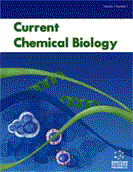Abstract
There are number of methods used for detection of antioxidant activities. We have developed a new method using a compound (resazurin) which undergoes a visible colour shift by chemical or physical interaction with ascorbate and other antioxidant compounds. This novel method was developed to measure the antioxidant activity using the resazurin dye in microtitre- plate. The experiment protocol, which is rapid and inexpensive, ensures sensitivity and reproducibility in the measure of antioxidant activity of hydrophilic or water soluble antioxidant compounds. This method is able to achieve more accuracy in the determination of the minimum antioxidant concentration (MAC) values of natural products, including crude extract, chromatographic fractions or purified compounds comparing with ascorbic acid and other standard antioxidant. Therefore, in our opinion this procedure can quickly provide useful information on the antioxidant contents of foods and plants extracts using a very small sample quantity.
Keywords: Antioxidant, minimum antioxidant concentration, microtitre-plate, resazurin, visible colour shift
Current Chemical Biology
Title:A Novel and Significant Method for Antioxidant Activity Utilizing Microtitre-plate (Resazurin Reducing Power Assay)
Volume: 6 Issue: 1
Author(s): Seema Dhankhar, Sandeep Dhankhar, Sandeep Kumar and Jaya Parkash Yadav
Affiliation:
Keywords: Antioxidant, minimum antioxidant concentration, microtitre-plate, resazurin, visible colour shift
Abstract: There are number of methods used for detection of antioxidant activities. We have developed a new method using a compound (resazurin) which undergoes a visible colour shift by chemical or physical interaction with ascorbate and other antioxidant compounds. This novel method was developed to measure the antioxidant activity using the resazurin dye in microtitre- plate. The experiment protocol, which is rapid and inexpensive, ensures sensitivity and reproducibility in the measure of antioxidant activity of hydrophilic or water soluble antioxidant compounds. This method is able to achieve more accuracy in the determination of the minimum antioxidant concentration (MAC) values of natural products, including crude extract, chromatographic fractions or purified compounds comparing with ascorbic acid and other standard antioxidant. Therefore, in our opinion this procedure can quickly provide useful information on the antioxidant contents of foods and plants extracts using a very small sample quantity.
Export Options
About this article
Cite this article as:
Dhankhar Seema, Dhankhar Sandeep, Kumar Sandeep and Parkash Yadav Jaya, A Novel and Significant Method for Antioxidant Activity Utilizing Microtitre-plate (Resazurin Reducing Power Assay), Current Chemical Biology 2012; 6 (1) . https://dx.doi.org/10.2174/2212796811206010070
| DOI https://dx.doi.org/10.2174/2212796811206010070 |
Print ISSN 2212-7968 |
| Publisher Name Bentham Science Publisher |
Online ISSN 1872-3136 |
 33
33
- Author Guidelines
- Bentham Author Support Services (BASS)
- Graphical Abstracts
- Fabricating and Stating False Information
- Research Misconduct
- Post Publication Discussions and Corrections
- Publishing Ethics and Rectitude
- Increase Visibility of Your Article
- Archiving Policies
- Peer Review Workflow
- Order Your Article Before Print
- Promote Your Article
- Manuscript Transfer Facility
- Editorial Policies
- Allegations from Whistleblowers
- Announcements
Related Articles
-
Maternal Sepsis: Current Approaches to Recognition and Clinical Management
Current Women`s Health Reviews Structural Chromosome Abnormalities Associated with Obesity: Report of Four New Subjects and Review of Literature
Current Genomics Mental Health Disorder Therapeutic Modalities Modified for the GMS
Current Psychiatry Reviews Averrhoa bilimbi L. leaf Aqueous Extract Modulates both Cardiac Contractility and Frequency in the Guinea-pig Atrium by the Activation of Muscarinic Receptors
Letters in Drug Design & Discovery A Review of the Cardiovascular and Anti-Atherogenic Effects of Ghrelin
Current Pharmaceutical Design Editorial (Thematic Issue: The Changing Face of Metabolic Syndrome and its Components in the Light of Current Knowledge)
Current Vascular Pharmacology The Co-Metabolism within the Gut-Brain Metabolic Interaction: Potential Targets for Drug Treatment and Design
CNS & Neurological Disorders - Drug Targets Nicotinic Receptors Containing the α7 Subunit: A Model for Rational Drug Design
Current Medicinal Chemistry CARING (CAncer Risk and INsulin analoGues): The Association of Diabetes Mellitus and Cancer Risk with Focus on Possible Determinants - A Systematic Review and a Meta-Analysis
Current Drug Safety Adverse Drug Reaction Labelling for Atomoxetine, Methylphenidate and Modafinil: Comparison of Product Information for Oral Formulations in Australia, Denmark and the United States
Current Drug Safety Current Applications of Artificial Neural Networks in Biochemistry with Emphasis on Cancer Research
Current Biochemical Engineering (Discontinued) Psychosocial Risk Factors Related to Ischemic Heart Disease in Women
Current Pharmaceutical Design Clinical Impacts in Cardiovascular Molecular Imaging: the Example of Cardiac Sympathetic Imaging in Heart Failure
Current Medical Imaging Infective Endocarditis Complicating Hypertrophic Obstructive Cardiomyopathy: Is Antibiotic Prophylaxis Really Unnecessary?
Current Cardiology Reviews Adeno-Associated Virus (AAV) Mediated Dystrophin Gene Transfer Studies and Exon Skipping Strategies for Duchenne Muscular Dystrophy (DMD)
Current Gene Therapy Obesity, Metabolic Syndrome, Diabetes and Arterial Hypertension
Immunology, Endocrine & Metabolic Agents in Medicinal Chemistry (Discontinued) Cigarette Smoke-Induced Proteostasis Imbalance in Obstructive Lung Diseases
Current Molecular Medicine Editorial (Thematic Issue: Metabolic Disorders, Drug Development, Drug Design and Biomarkers)
Current Pharmaceutical Design Fullerenes: From Carbon to Nanomedicine
Mini-Reviews in Medicinal Chemistry Vascular Risk Factors and Neurodegeneration in Ageing Related Dementias: Alzheimer’s Disease and Vascular Dementia
Current Alzheimer Research

















.jpeg)








